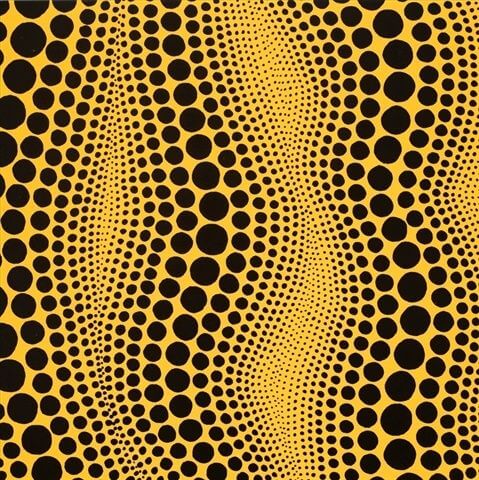- Sale
- NEW ARRIVALS
- Most Popular
- All Prints
-
Artists
-
 ALEC MONOPOLY
ALEC MONOPOLY7 artworks
-
 Alex Katz
Alex Katz133 artworks
-
 Banksy
Banksy4 artworks
-
 Bridget Riley
Bridget Riley1 artwork
-
 Damien Hirst
Damien Hirst475 artworks
-
 Hajime Sorayama
Hajime Sorayama126 artworks
-
 Harland Miller
Harland Miller48 artworks
-
 Invader
Invader72 artworks
-
 Javier Calleja
Javier Calleja2 artworks
-
 Kaws
Kaws105 artworks
-
 Keith Haring
Keith Haring192 artworks
-
 Matt Gondek
Matt Gondek32 artworks
-
 Mr.
Mr.28 artworks
-
 Satoru Koizumi
Satoru Koizumi1 artwork
-
 Takashi Murakami
Takashi Murakami342 artworks
-
 Takeru Amano
Takeru Amano22 artworks
-
 Yayoi Kusama
Yayoi Kusama153 artworks
-
- Sell
-
About

- Sale
- New Arrivals
- Most Popular
- All Prints
- Arists
- Sell
-
About
- the service
- How it Works
- Buy
- What is a print?
- Authenticity Guarantee
- the company
- About
- Contact us
- Login
-
 ALEC MONOPOLY
ALEC MONOPOLY7 artworks
-
 Alex Katz
Alex Katz133 artworks
-
 Banksy
Banksy4 artworks
-
 Bridget Riley
Bridget Riley1 artwork
-
 Damien Hirst
Damien Hirst475 artworks
-
 Hajime Sorayama
Hajime Sorayama126 artworks
-
 Harland Miller
Harland Miller48 artworks
-
 Invader
Invader72 artworks
-
 Javier Calleja
Javier Calleja2 artworks
-
 Kaws
Kaws105 artworks
-
 Keith Haring
Keith Haring192 artworks
-
 Matt Gondek
Matt Gondek32 artworks
-
 Mr.
Mr.28 artworks
-
 Satoru Koizumi
Satoru Koizumi1 artwork
-
 Takashi Murakami
Takashi Murakami342 artworks
-
 Takeru Amano
Takeru Amano22 artworks
-
 Yayoi Kusama
Yayoi Kusama153 artworks

How To Remove Water Stains From Art Prints
July 12, 2023 4 min read 1 Comment
As an art collector or investor, it's not just about acquiring priceless art prints; preserving them becomes equally essential.
One of the most prevalent issues that art enthusiasts face is water stains.
These unwanted spots and marks can significantly affect the aesthetics and monetary value of the artwork.
It's crucial to learn how to properly remove these blemishes without damaging the print.
Understanding Water Stains
Before diving into the removal process, let's understand what water stains are. Essentially, they occur when water or moisture comes into contact with the print, causing the colors to bleed, fade, or form undesirable marks.
These can be anything from light discolorations to severe distortions in the artwork. The type and severity of the stain often determine the most effective treatment method.
Immediate Actions
As soon as you spot a water stain, act promptly. It's easier to treat fresh water stains than dried ones. If the stain is still wet, use an absorbent paper or cloth to blot it.
Avoid rubbing the area, as this can spread the stain or damage the print.
Once blotted, allow the print to air dry. Do not use heat sources as they could potentially cause more damage.
Restoration Process
The restoration process starts with the gentle cleaning of the art print. Dust and dirt can interfere with the removal of water stains, so make sure your print is clean before proceeding. Use a soft brush to remove loose dirt particles.
Next, you need to carefully humidify the print. This may sound counterintuitive, given that water caused the problem in the first place, but introducing controlled moisture can help to reduce the visibility of the stain. To do this, place the print in a closed container with a source of humidity, like a dish of water. The print itself should not come into contact with the water. The aim is to allow the gentle moisture in the closed container to soften the paper fibers and dilute the stain.
After the humidification process, place the print on an absorbent material like blotting paper. It's recommended to sandwich the print between two sheets of such paper. Using a weight, press down on the stained areas to help draw out the moisture and, with it, the staining.
Repeat the humidification and blotting steps until the stain has been sufficiently reduced. Note that it may take several cycles to see significant improvement.
Professional Intervention (Do This Instead)
While the above steps work well for most minor to moderate stains, not all water stains can be effectively removed using DIY methods. Some severe stains might require the intervention of a professional conservator.
They possess the knowledge, skills, and specialized equipment needed to handle and restore priceless artworks without causing further damage.
Always remember, it's better to consult with a professional before attempting any restoration process if you're unsure. Damaging a print in the process of trying to restore it will not only ruin its aesthetics but can also diminish its value.
Preventive Measures
The best way to deal with water stains is to prevent them from occurring in the first place. Store and display your art prints properly.
Keep them away from direct sunlight, high humidity, and areas prone to flooding or leaks. If your prints are framed, ensure they have proper backing, and the frames are sealed to prevent moisture ingress.
Additional Advice
Understanding Your Materials
The type of paper and ink used in an art print can influence how you should go about removing water stains.
For instance, older prints may use organic-based inks that can fade or bleed with excessive humidity, while newer prints may use inks that are more resistant to water.
Likewise, handmade paper can react differently to humidity than machine-pressed paper. Always consider the materials before beginning the restoration process.
Working with Different Types of Prints
Different types of prints may require different care. For instance, photogravure prints, which involve transferring a photo to a plate and then to paper, are typically more resistant to water damage due to the process used to create them.
On the other hand, lithographs, which involve the use of oil and water, may be more susceptible to water damage. Familiarize yourself with the type of print you are dealing with and research the best ways to handle that specific type.
More Preventative Measures
Consider using archival-quality materials when storing and displaying your art prints. Archival materials are designed to protect against acid damage, which can contribute to water stains.
Also, consider investing in art insurance. While this won't prevent water stains, it can provide financial protection if a valuable piece is damaged.
Maintaining a Stable Environment
Another key aspect of preventing water stains is maintaining a stable environment. Drastic changes in temperature and humidity can lead to condensation, which can cause water stains.
Aim for a stable relative humidity of about 40-50% and a temperature around 70 degrees Fahrenheit. Avoid storing art prints in basements, attics, or bathrooms where humidity levels can fluctuate.
Framing Tips
When framing, use UV-filtering glass or plexiglass to protect the print from harmful UV rays that can lead to fading and water damage. Also, consider using a mat, which can provide a buffer against any moisture that may get inside the frame.
In essence, caring for and maintaining art prints is an ongoing process that requires knowledge, commitment, and a gentle touch. With these additional insights, you're well-equipped to protect your investment from the common problem of water stains, ensuring your collection retains its beauty and value.
Conclusion
In conclusion, removing water stains from art prints can be a complex process. It requires patience and careful handling to maintain the integrity and value of the artwork.
With the right approach, you can extend the life and beauty of your collection, ensuring they remain a pleasure to the eye and a sound investment.
1 Response
Leave a comment
Subscribe
Sign up to get the latest on sales, new releases and more …





















Akshara
September 30, 2024
Hi